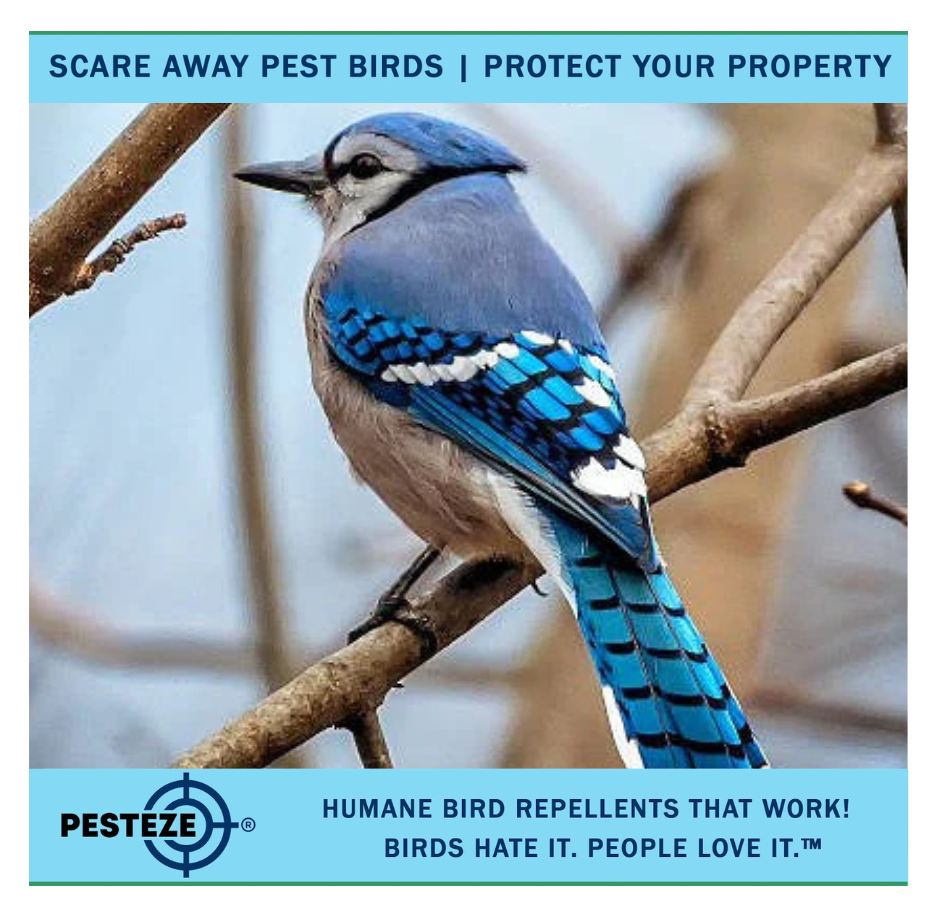HOW TO DETER BLUE JAYS: KEEPING YOUR GARDEN SAFE AND SOUND!

HOW TO DETER BLUE JAYS: KEEPING YOUR GARDEN SAFE AND SOUND!
SUMMARY
Blue jays are strikingly beautiful birds known for their intelligence and adaptability. While they can bring life and color to your garden, their boisterous behavior and tendency to raid bird feeders can become problematic. To effectively deter blue jays while ensuring their safety, consider implementing various humane strategies that encourage them to seek alternative food sources.
FEATURES
- Visual Deterrents: Use shiny objects or decoys to create an unwelcoming environment for blue jays.
- Feeder Modifications: Install feeders designed to limit access for larger birds like blue jays.
- Sound Devices: Incorporate noise-making tools to disrupt their feeding patterns.
- Protective Barriers: Use netting or mesh to physically block blue jays from accessing specific areas.
- Remove Food Sources: Keep bird feeders clean and free from spilled seeds to avoid attracting blue jays.
- Plant Selection: Opt for plants that are less appealing to blue jays, focusing on native species.
DESCRIPTION
Blue jays are known for their vibrant blue feathers and striking calls, making them a favorite among birdwatchers. However, their assertive nature can lead to conflicts with gardeners, especially when they raid bird feeders or disrupt feeding activities of smaller birds. If you're looking to deter blue jays while maintaining a balanced ecosystem in your garden, several humane strategies can help.
One effective method is to use visual deterrents. Blue jays are curious birds that can be startled by shiny objects. Hanging reflective materials such as aluminum foil strips, shiny tape, or old CDs around your garden can create a dazzling effect that keeps them at bay. Additionally, placing decoys, such as fake owls or other predatory birds, can create the illusion of danger and encourage blue jays to seek safer feeding grounds.
Feeder modifications can also be beneficial. Consider using bird feeders designed specifically for smaller birds, which can limit access for larger species like blue jays. Tube feeders with small openings are a great option, as they make it difficult for blue jays to feed while still allowing smaller birds access.
Incorporating sound devices can help deter blue jays as well. These birds are sensitive to unfamiliar sounds, so using noise-making tools such as wind chimes, bells, or recorded distress calls can disrupt their feeding habits and make your yard less inviting.
Installing protective barriers is another effective strategy. Using nets or mesh around your garden or specific plants can physically block blue jays from accessing your precious flowers and vegetables, creating a safer environment for your plants.
To further discourage blue jays, it's crucial to remove food sources. Keeping bird feeders clean and free from spilled seeds can minimize the attraction for blue jays. Regularly emptying feeders and refilling them only with specific seeds favored by smaller birds can help deter blue jays from frequenting your yard.
Additionally, consider your plant selection. Choosing plants that are less appealing to blue jays, such as native species that don't produce berries or seeds they favor, can also help reduce their presence in your garden.
By employing a combination of these humane deterrence strategies, you can effectively keep blue jays away from your garden while respecting their role in the ecosystem.
- Maanas Mehta


Comments 0